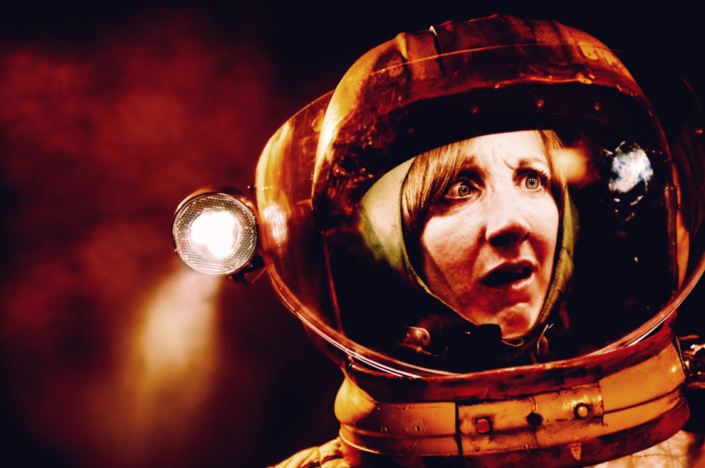
Future-gazing is not usually considered to be a good fit with theatre. Yet as Green Ginger have shown it can be fertile ground for theatrical imagination. In a future where tiny robots keep vigil over our vital functions, personal medicine has reached its apogee. But how far can it go? Can loneliness and unhappiness be cured by means other than interaction with those warm, fleshy, emotionally complicated organisms we call people? Can a life seemingly devoid of other human beings ever offer happiness, or could such emotional problems be ‘cured’ by intervention at the cellular level. Could our emotional problems be solved by a tiny submarine navigated by a miniaturised person which has been injected into a human body?
The question is posed with some wit by this devised piece. Dialogue is sparse, but is made up for by a constant flow of visual imagery, which unabashedly flaunts the cinematic references that it wears on its sleeve. As a result the show is visually a delight. Blood cells and antibodies flow freely in the continual battle, which is the constant vigil of our immune system. Neurons fire in new patterns across the synapses
The collaboration between Green Ginger and the Nordland Visual Centre has resulted in a show that mixes puppetry, human action and visual effects hardly bettered by cinema and which takes theatre into areas we might not have thought possible. Cunningly they even manage to replicate a cinematic mix of ‘wide angle’ and ‘close up’ by the use of variations of scale in the puppetry – performed by the cast and Chris Pirie, the artistic director.
A man seemingly looks out at the audience, but is in fact gazing at a giant computer screen, which surprisingly appears to float mid-air. He constantly speaks to the computer which controls the medical robot (looking remarkably like the front end of the classic VW camper) that navigates through his body. The problem is that there’s more life in the dancing homunculus that pilots the Intronaut capsule (Emma Keaveney-Roys) than in the man (Adam Fuller) who spends most of his time obsessing about the colour choice for a logo when not flirting with the idea that his life might be improved by a little neural interference from a machine programmed not to enter the brain. The man prevails, but ‘at what cost’ is a question the play leaves open.
Simon Preston’s score is both atmospheric and descriptive and integral to the overall experience. Equally, the lighting design by Marianne Thallaug Wedset plays an essential part in switching the location of the action between a recognisable physical world and the fantastical ‘inner space’ of the human body.
When the company finds a way of bringing dramatic punch to their shows they will be unstoppable; for the moment we marvel at the sheer audacity of theatrical imagination and the exquisitely executed innovation. ★★★★☆ Graham Wyles 24th March 2019

